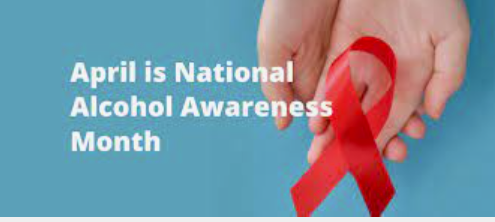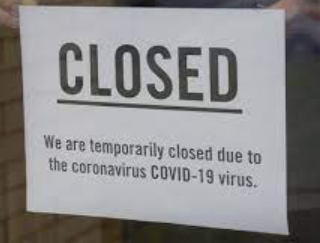TAKE 3 W/ SLP, April 2022
NOTE: Sober Linings Playbook is a personal website. Any views or opinions expressed herein belong solely to the website owner and do not represent those of individuals or organizations the owner may be associated with in a professional or personal capacity, unless explicitly stated.
“Take 3 w/SLP” is Sober Linings Playbook’s monthly take on three things we’ve been following as we compile the Wednesday Weekly addiction and recovery news clips. “Take 3” is also a monthly segment on the Recovery in the Middle Ages podcast on the last Friday of the month. Tune in and give it a listen.
In this edition: (1) Alcohol Awareness Month; (2) Non-substance addictions; and (3) Involuntary treatment and the jailing of Jesse Harvey.
One. Alcohol Awareness Month
When it comes to media coverage and public policy discussions about addictive substances, opioids have understandably stolen the spotlight in recent decades. But all the while, alcohol has quietly held its own as the deadliest substance in the U.S. On its Alcohol Awareness Month webpage, Shatterproof reports 95,000 Americans die from alcohol annually, making it the third leading cause of preventable death.
A March 22, 2022 WebMD article (“Alcohol-Related Deaths Spiked During First Year of Pandemic”) reports on a recent Journal of American Medicine study that found alcohol-related deaths topped 99,000 in 2020 – a 25 percent increase from the 79,000 deaths documented in 2019. The study’s authors point to pandemic-related issues such as an increase in binge drinking, delays in accessing treatment and an increase in the use of alcohol to cope with stress:
“The assumption is that there were lots of people who were in recovery and had reduced access to support that spring and relapsed…Stress is the primary factor in relapse, and there is no question there was a big increase in self-reported stress, and big increases in anxiety and depression, and planet-wide uncertainty about what was coming next…That’s a lot of pressure on people who are trying to maintain recovery.”
Pandemic stress. Reduced access to support. Those were definitely factors in my own relapse experience as lockdown loomed. On March 19, 2020, at the urging of friends, I went to a noon 12-step meeting. I snapped a picture of the “closed due to COVID-19” sign on the door just to prove I had made the effort. At the time, members of private online sober support communities were posting to report relapses related to pandemic stress and anxiety. The early days of the pandemic were indeed difficult times.
Despite the significant risks of alcohol, and the increase in alcohol-related deaths during the pandemic, we tend to discount – or outright overlook – the risks of alcohol because it is legal, socially acceptable and ubiquitous. Author Ericka Andersen makes that point in a recent piece in the New York Times (“Women, Do We Need an Intervention?”).
Andersen takes aim at the role of marketing – particularly marketing aimed at women – in normalizing alcohol consumption as a well-deserved stress reliever. Sounding a bit like author Annie Grace (“This Naked Mind: Control Alcohol, Find Freedom, Discover Happiness & Change Your Life”), she counters the ethos of “Mommy Wine Culture” with a list of facts about alcohol. According to Andersen, “once you know the truth about alcohol’s effect on the body, you can’t unknow it.” She concludes by calling alcohol a public health issue that requires more attention from government and corporate leaders to increase awareness, and to reduce the shame and stigma of addiction and recovery.
Two. Non-substance addictions
In the year since I began compiling the Wednesday Weekly news clips, I’ve come across stories on a wide variety of addictions that have nothing to do with alcohol or drugs. These include gambling, eating disorders, sex and pornography, love, cutting (and other forms of self-harm), shopping and video gaming, to name a few.
Here is a small sampling from recent headlines:
Decoding the science behind food addiction (and how to overcome it), The Indian Express, March 31, 2022
Is David Duchovny a sex addict? How a sordid lifestyle led to separation from Tea Leoni, Meaww - March 31, 2022
Louisiana state senator from New Orleans cites gambling addiction, depression in resigning, 4WWL, April 8, 2022
Unpacking the Notion of Love Addiction, Health Line, March 22, 2022
I used to be somewhat dismissive of stories about non-substance addictions. I thought they were something altogether different than my addiction. I wasn’t even certain they could rightly be called addictions. Over time, my thinking has changed.
If we accept that addiction refers to compulsive behaviors (often used as a coping strategies) that persist despite negative consequences, it’s difficult to argue non-substance addictions should be excluded. As it turns out, people more expert than me have come to the same conclusion.
In February, the World Health Organization recognized video game addiction as an illness (“Is Video Game Addiction a Real Illness?” Bloomberg, March 18, 2022). Psychiatrist Dr. Anna Lembke (author of Dopamine Nation: Finding Balance in the Age of Indulgence and chief of the Stanford Addiction Medicine Dual Diagnosis Clinic), frequently discloses what she describes as her own addiction to romance novels.
Lembke claims the same physiology that makes people addicted to controlled substances allows people to become addicted to things like books, social media or gambling. (For more from Lembke, the Aug. 23, 2021 Rich Roll podcast is worth a listen: “Anna Lembke, MD on The Neuroscience of Addiction, Dopamine Fasting & The Opioid Crisis”).
In a recent Filter magazine article, psychologist Stanton Peele agrees. He argues by recognizing non-substance addictions we avoid the tendency to reduce addiction to something caused by the unique property of drugs (“Non-Substance Addictions Are Key to Understanding What Drugs Don’t Do” Filter, March 23, 2022.
Obviously, if the characteristics of addiction are routinely exhibited with non-drug behaviors, the notion that addiction is a unique property of drugs doesn’t hold up.
— Dr. Stanton Peele
Peele also makes that case that research on non-substance addictions can help shed more light on multiple pathways of recovery such as natural recovery and moderation because people who struggle with non-substance addictions often recover without formal treatment programs and aren’t necessarily expected to achieve abstinence. Peele also suggests the study of addictions that don’t involve drugs or alcohol highlights the importance of coping skills, social resources and environmental factors in addiction and recovery.
To be sure, there are unique aspects to substance use disorders and to the specific risks and consequences associated with them. Because we tend to find comfort and personally relevant insights in stories that are similar to our own, I have an affinity for stories of addiction to substances more so than to non-substance addictions.
But despite my own biases, I do believe the phenomenon we call addiction is broader than drugs and alcohol and will continue to include stories and reports of non-substance addictions in the Wednesday Weekly clips.
Three. Involuntary treatment and the jailing of Jesse Harvey
It’s probably safe to say most people treated for addiction, even those who enter voluntarily, have experienced some level of coercion. But civil commitment - a court-ordered form of institutionalization for drug treatment -takes coercion to the extreme.
A recent article about a young man who voluntarily agreed to be committed by the courts to treat his opioid addiction (“The Jailing of Jesse Harvey,” Type Investigations, March 23, 2022), sheds disturbing light on the use of civil commitment to treat substance use disorders.
Jesse Harvey was a graduate student and a harm reduction activist who reportedly advocated for compassionate treatment of people who struggle with addiction. Long suffering from opioid use disorder, Harvey agreed to go through the civil commitment process in Massachusetts. He had done it before. Arguably, he should have had some sense of what was in store. The command-and-control model of treatment he experienced in a prison-like environment provided little in the way of evidence-based therapies and left him traumatized. Not long after his release, Harvey relapsed and eventually overdosed.
The Type Investigations article reports that while civil commitment was once reserved primarily for severe mental illness, it is being used more frequently to address substance use disorders. A 1997 U.S. Supreme Court decision broadened the conditions under which people could be civilly committed (from “mental illness” to “mental abnormality”). Some states have responded to the opioid crisis by loosening laws to make it easier to commit people for substance use disorders.
Civil commitment is involuntary treatment. Even when a person voluntarily agrees to be committed, as was the case with Jesse Harvey, they give up significant civil liberties and are not free to leave treatment when they want. As a result, the practice is controversial and far from universally accepted. According to the Type One Investigation article, a 2007 survey found only 12 percent of American Psychiatric Association members support the practice. Nonetheless, 37 states and the District of Columbia use civil commitment for substance use disorders.
In 2021, California lawmakers approved AB 1542, a pilot program to send people convicted of drug offenses to secure treatment programs. Although not the same as civil commitment, there are some obvious similarities. In his veto message, Governor Newsom said giving people a choice between incarceration and treatment amounts to “forced treatment” and that “coerced treatment for substance use disorder is not the answer.”
Opponents of AB 1542 echoed the governor’s concerns, arguing “secure treatment” is incarceration by another name. Human Rights Watch included the following statement in a letter to the bill’s author and the chair of the Assembly’s Committee on Public Safety:
“This bill proposes forcing people involuntarily into “secured” or locked treatment, regulated by the courts, thus blurring the lines between medical care and punishment, and undermining the goal of helping those in need. It runs directly counter to the principle of free and informed consent to mental health treatment, which is a cornerstone of the right to health. Conflating health treatment and jailing, as envisioned by AB 1542, risks substantial human rights abuse, is ineffective as a treatment, and takes resources and policy focus away from initiatives that are much more likely to help people.”
— Human Rights Watch
In the February edition of Take 3, I raised concerns that fear and misinformation about fentanyl might be leading to more punitive drug laws. One could ask whether those same fears are also paving the way for more coercive forms of addiction treatment. Several stories in the news this month suggest that might be the case, at least to some extent:
The author of a recent op ed advocates for the use of “Casey’s Law,” a form of involuntary court-ordered treatment (“How Casey's Law can help those struggling with addiction,” Spectrum News1, April 16, 2022).
In San Francisco, mothers of children who struggle with addiction erected a billboard to argue the city’s harm reduction policies discourage sobriety and to make the case for more punitive treatment of drug users (“San Francisco, CA: Mother of addict slams San Francisco open-air drug policies,” NY Post, April 11, 2022).
A recent editorial in Colorado argues felony penalties for possession would give prosecutors leverage to encourage people with addiction to seek treatment (“Colorado Springs Gazette: Felony charges would help the addicts we love,” Colorado Politics, April 12, 2022.
Is the current overdose crisis fueling a movement toward “compassionate” coercion and away from “client-centered” treatment that “meets people where they’re at?” We probably can’t reach that conclusion based on the small sampling of stories listed above. Nonetheless, in the coming months I will be paying closer attention to media stories and legislative proposals related to civil commitment and other forms of involuntary treatment.
We’ll be back with more next month. Until then, stay tuned and keep current with the Wednesday Weekly news clips!
Sober Linings Playbook



